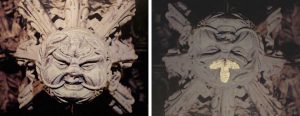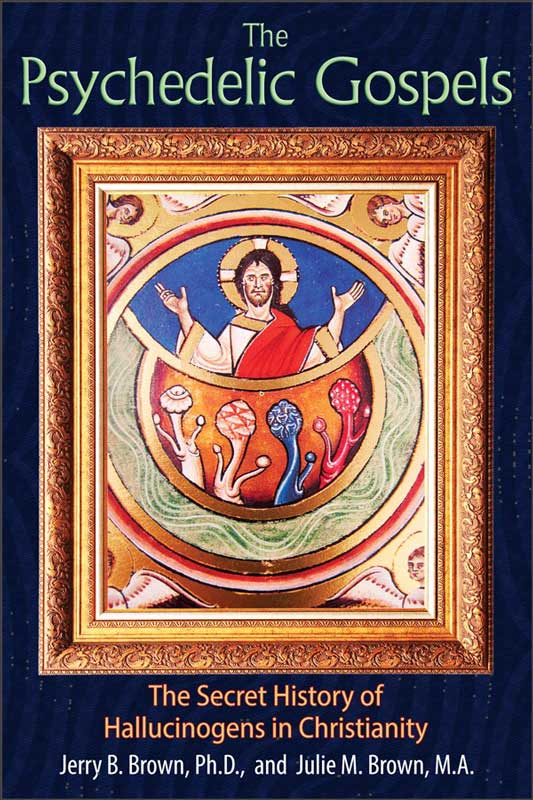Julie and my research on psychedelics, and their possible role in the life of Jesus, began quite unexpectedly in 2006. The catalyst was a visit to Rosslyn Chapel in Scotland. During that visit, I purchased a plaster replica of the Chapel’s most prominent green man. This was one of over 100 green man heads that decorate the interior of this unique church, this “bible in stone.”
Several weeks after leaving Rosslyn, I noticed a psychoactive Amanita muscaria mushroom sculpted upside down in the green man’s forehead. Suddenly, I wondered: was the green man of Rosslyn Chapel a clue to the presence of visionary mushrooms in Christianity?

Photograph courtesy of Julie M. Brown
Later that day, I experienced a revelation which fused together the green man, medieval Christianity and the life of Jesus. For a moment, my intellectual skepticism was suspended. I contemplated a question that until now had seemed implausible, even unimaginable.
What if Jesus experienced immortality by ingesting visionary plants?
Jesus said “I am the living bread”
Swept up in speculation, I wondered what Jesus would say if we could walk and talk with him in the hills surrounding Galilee. Would the holy man explain his mysterious declaration, offering a pathway to immortality: “I am the living bread which came down from heaven: if any man eat of this bread, he shall live forever” (John 6:51)?
Would Jesus clarify his perplexing words at the Last Supper: “Verily, verily, I say unto you, Except you eat the flesh of the Son of man, and drink his blood, you have no life in you. Whosoever eats my flesh, and drinks my blood, has eternal life; and I will raise him up at the last day” (John 6:53-54)?
I pondered the message of these mystifying sayings in which Jesus offers the eating of “living bread” as the gateway to immortality. Could they be biblical similes for ingesting entheogenic (“God-generating-within”) plants?
For a moment, I was on the verge of throwing caution to the wind, of embracing these speculations as the truth. I found myself moving rapidly from a mild suspension of disbelief to its rambunctious overthrow. Suddenly, the words of Victor Turner, my esteemed professor of symbolic anthropology at Cornell, popped into my head, warning me to take stock of the situation. Turner’s favorite dictum was “good theory comes from good field work.” In other words, go out and gather the facts before jumping to conclusions.
Our book, The Psychedelic Gospels: The Secret History of Hallucinogens in Christianity, presents the results of this field work, an anthropological journey through Europe and the Middle East. Along the way, we discovered and photographed remarkable images of entheogens in Christian art ̶ images that have remained hidden in plain sight for centuries.
By the end of this journey, we came to surprising conclusions about several enigmatic sayings of Jesus as reported in the Canonical Gospels and the Gnostic Gospels. To read more, please see Chapter 14, “Kingdom of Heaven” in The Psychedelic Gospels (click here to purchase our book).






